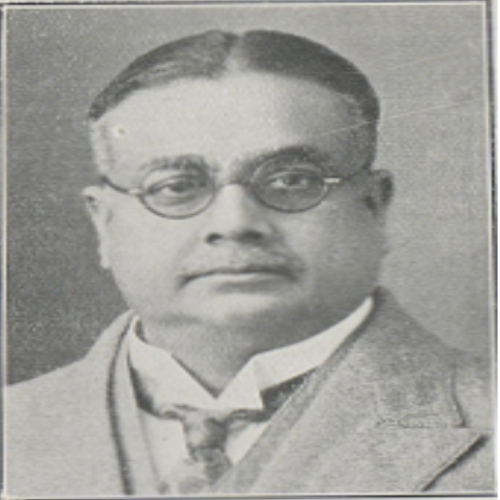Early Life:
Abdul Halim Khan Ghuznavi was born on 11 November 1876 into a wealthy and literary Zamindari family from Delduar village of Tangail district (present day Bangladesh). His mother was Karimunnesa Khanam Chaudhurani, a Bengali poet, writer and literary patron and his aunt Rokeya Sakhawat Hossein, was the revolutionary Bengali writer, educator and social worker. His brother, Abdul Hakim Khan Ghaznavi, would later go on to be a legendary political figure.
Ghuznavi’s mother was keen that her sons receive western education: the elder son was sent to London, and the younger one was sent to Calcutta. He studied at the City School and completed his undergraduate studies at St. Xavier’s College.
At the age of 24, Ghuznavi became the Chairman of Mymensingh Municipality.
Role in India’s Independence Movement:
Ghuznavi’s political career began when the British partitioned Bengal in 1905. Unlike other Muslim figures of the time, he opposed the partition. This brought him close to the Congress Party who protested the partition. He formally joined the Congress Party in 1905 and soon became a leader of the Bengal Provincial Congress. His association with the Party however was short-lived. He soon grew disillusioned with the Congress and left the Party in 1906. Without any political affiliation, he rose to become a prominent Muslim leader in Bengal.
He entered a legislature for the first time in 1926 when he was elected to the Central Legislative Assembly as an Independent. In his legislative career, he would go on to occupy important Statutory Committee positions which included: Railway Standing Finance Committee (1927-28), Advisory Committee of Railways (1927-30), Federal Finance Committee (1932), Minorities Committee (1930-32)
In 1927, he submitted a memorandum to the Simon Commission claiming that greater political power for Indians, without constitutional safeguards for Muslims, would make the Muslims ‘permanently in a position subservient to the Hindus’. Around this time, he joined the Muslim League and presided over the Kanpur Session of the 1929 All-India Muslim League Conference. He also took part in all three Round Table Conferences that were held between 1930 and 1933 as a League representative.
In 1936, under the leadership of Sir Ghulam Hidayatullah, he alongside a few other elected legislative members formed the All-India Independent Democratic Party. But this new political project didn’t work out and Ghuznavi left the Party.
Much like his mother, Ghuznavi was quite the patron of culture and an educationist. He was a member of the Dhaka University Court, the Aligarh University Court and a Fellow of the Calcutta University. He was among the Board of Trustees of the Indian Museum and a member of the Royal Asiatic Society. He also served as the President of both the Governing Body of the Government School of Arts and the Academy of Fine Arts in Calcutta (1944-47).
Contribution to Constitution Making:
Ghuznavi was elected to the Constituent Assembly from West Bengal. He was not an active member of the Constituent Assembly.
Later Contributions:
Ghuznavi did not have much of a political career post-independence. He chose to return to his village in Tangail after 1947 and quietly passed away on 18 June 1953.
Key Writings:
During his time with the Muslim League, he was actively involved in the publication of two of its newspapers, The Star of India and The Mussalman.
Abdul Halim Ghaznavi (Banglapedia Profile)
The Bengal contingent at the Constitution Assembly by Yajnaseni Chakraborty (GetBengal, 2022)
Who’s Who 1950 (Parliament of India)

